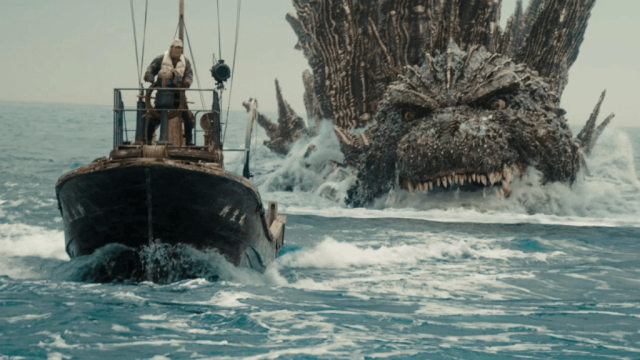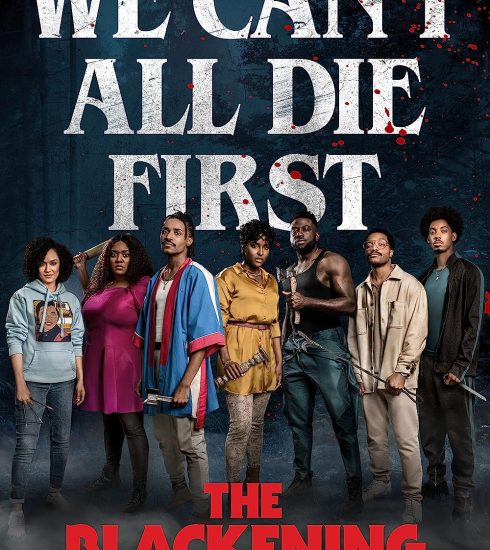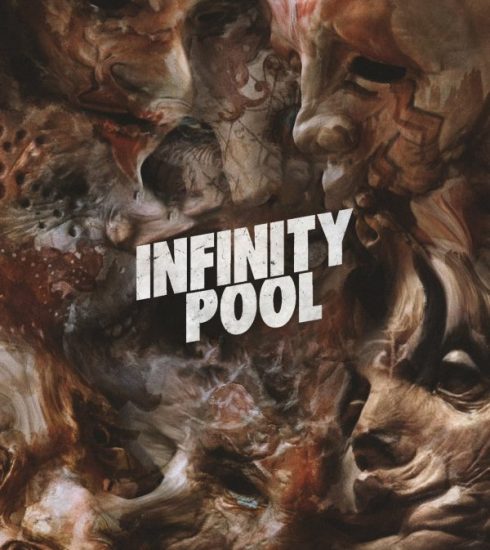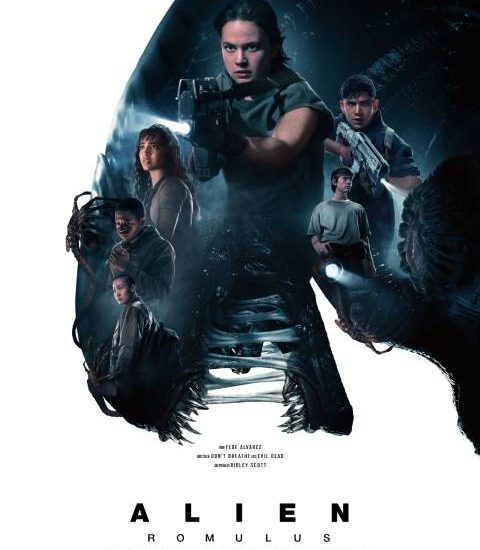Movie Review: Godzilla: Minus One
Godzilla Minus One isn’t just a good Godzilla movie. It’s an excellent Godzilla movie arguably among the best ever to grace the screen. With just enough character development to keep the humans from becoming props and spectacular sequences of destruction, the movie justifies its two-hour running time. The special effects are as good
as anything Hollywood has offered for a kaiju film, and the technical aspects – set design, sound, cinematography– are perfectly wed to the screenplay. Granted, an innate appreciation for monster movies is a necessary characteristic, but those who are biased in favour of Godzilla will be more than satisfied with his latest romp.
There are lessons that Hollywood could learn from Godzilla Minus One. The first is the unimportance of canon and continuity. In the last ten years, Godzilla’s origin story has been rebooted three times – first in Gareth Edwards’ Americanised version in 2014, second in Toho’s 2016 Shin Godzilla, and finally in this movie. The mantra seems to be to tell the best self-contained story possible without much concern for previous or future instalments, and the approach works. One doesn’t need to have seen any previous Godzilla movies or to have spent countless hours watching a streaming service in order to have a full theatrical experience with Godzilla Minus One.
Then there’s the budget. Reportedly, this cost $15M to make. Yet it looks every bit as good – and perhaps even better – than the recent American Godzilla trilogy of Godzilla (budget: $160M), Godzilla: King of the Monsters (budget: $170M), and Godzilla vs. Kong (budget: est. $180M). The explosions and disaster set pieces are as stunning, the creature effects are as show-stopping, and the end result is as breathtaking. For many years, the Godzilla movies were beloved for their cheesiness – a guy in a monster suit jumping around fighting some other guy in a monster suit. No more. Yet, for the amount of money that might fund a low-budget indie drama, Toho has assembled one of the most technically adept releases of 2023.
The story is a rarity for a Godzilla film – a period piece. In retelling the monster’s origins, writer/director Takashi Yamazaki returns to where it all started: the post-World War II era. In addition to turning back the clock some 75+ years, he returns to the themes of the original (1954) production about the consequences of war and the
dangers of harnessing nuclear power without the requisite ethical constraints. From a story perspective, Yamazaki ignores all the previous movies in the long-running series, instead opting to start with a clean slate. I don’t think anyone will mind.

The movie opens in the waning weeks of World War II. With Japan on the verge of surrender, kamikaze pilot Koichi (Ryunosuke Kamiki) chooses not to fly his suicide mission, instead landing on Odo Island with the complaint of “engine trouble.” While the mechanics are examining his plane, a monstrous dinosaur-like creature, named Godzilla by the natives, emerges from the sea to destroy the base and kill everyone except Koichi and one of the mechanics. Having had an opportunity to (possibly) destroy Godzilla but not taking the shot, Koichi blames himself for the massacre.
Several months later, he arrives in a bombed-out Tokyo to discover that his parents were killed in a raid. Setting up shelter in the remains of his house, he does his best to move forward, struggling with little food or fuel for heat. One day, he takes in a young woman, Noriko (Minami Hamabe), who, like Koichi, lost her parents in the war. She is caring for an orphaned infant named Akiko. Over the course of the next two years, the trio forms an unconventional family. Koichi and Noriko have feelings for one another but do not act on them, in part because of Koichi’s PTSD/Survivor’s guilt. Akiko regards the adults as her parents, although Koichi is uncomfortable being called
“Daddy.”
Meanwhile, Godzilla is in the vicinity of Bikini Atoll at the time of the nuclear test. Mutated into a bipedal monster of massive destructive ability, the creature heads
for Japan’s mainland, taking out warships along the way. Koichi resolves that should he have another opportunity to stop Godzilla, he will not hesitate, even if it costs him his life. One of the pleasures of Godzilla Minus One is that it feels like a Godzilla movie through-and-through. As well-made as some of the American movies were, even in the best of them, the titular monster seemed like an imposter. (Note: “imposter” would be too kind of a word for the thing that wreaked havoc in the unfortunate 1998 Roland Emmerich movie, which most Godzilla fans prefer to forget.)
Here, however, we are presented with the real Godzilla, enhanced by cutting-edge special effects but still 100% recognisable. Even the roar hasn’t changed. As for the atomic breath…its effects have to be seen to be believed. This film is darker than most Godzilla stories, focusing on many of the negative consequences of the monster’s
attacks. The death and destruction feel tangible, especially in how they directly impact Koichi. The characters are better fleshed out than one expects from a Godzilla movie, and the understated romance between Koichi and Noriko is touching. These things increase the stakes when Godzilla attacks and add a layer of peril to scenes that otherwise might be appreciated based on their technical acumen.
Toho has enough faith in the movie that, as they did with Shin Godzilla in 2016, they are opening the movie wide in foreign theatres (with subtitles, not in a dubbed
version). Given the enduring popularity of the monster, which his American movie appearances have enhanced, it’s not a risky proposition. Although the film isn’t likely to
top the box office, it offers fans an opportunity to see one of the most accomplished kaiju movies to date on a big screen.
Boluwatife Adesina is a media writer and the helmer of the Downtown Review page. He’s probably in a cinema near you.






